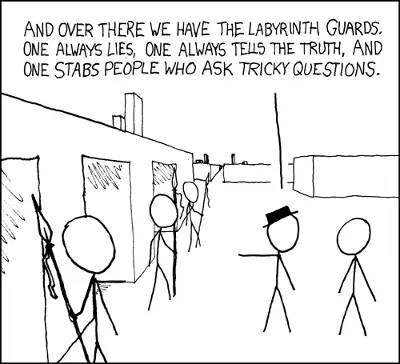What is the survey research method? What are its purposes and weaknesses? This article provides answers to these questions.
The survey research method is a common approach used in business, especially the marketers who want to improve on their product’s performance. Read on to find out more about this widely used research tool.
Survey Method Definition
The survey method is a research technique that uses a questionnaire designed to gather specific information needed by the researcher from a random sample of people who are knowledgeable, have insights, or experiences related to the issue or problem at hand.
Purposes of the Survey Research Method
The main purposes of the survey method are:
- describe the characteristics of the population,
- test relationships between the variables of the study, and
- predict outcomes based on large data sets obtained during the survey.
Describe the characteristics of the population
After a survey is conducted, you, as the researcher, can summarize and analyze the results to make out the characteristics of that population you are interested in.
For example, in a market research, if your target population are the women who use your company’s product, say a newly released detergent which promises to clean white clothes at 50% less time in washing machines than the ones in the market, then you might want to know details about women who do their laundry and who use washing machines to clean their clothes.
In particular, you might want to know their age, civil status, educational attainment, occupation, number of children, income, detergent preference, among others.
Using the data gathered in the survey, it is now possible to characterize the predefined population to give you insights into the profile of your product’s users.
For example, if the data shows that there are significantly more single women who purchase your product, then you might develop marketing strategies that take advantage of this information.
Characterizing the population has a lot of insights to offer.
Test relationships between variables
You can choose the variables of the study and relate them to each other to gain more insights.
For example, a Chi-square analysis of civil status (single, married, widowed) and preferred features of a detergent (strong cleaning agents, gentle on the skin, perfumed, with softener) may reveal shifts in preference as a woman undertakes more responsibility.
We can gain more insights, leveling up the analysis from simple descriptive statistics to inferential.
Predict outcomes
Moving on to multivariate analysis such as multiple regression, we can analyze simultaneously the different variables used in the study to predict an outcome.
Let’s say, we’d like to predict, based on the population’s profile, the willingness to pay of consumers for a detergent that matches their preferred features. The resulting model would tell us which variables significantly influence the amount they are willing to pay to get the detergent that they want.
Survey research data would provide us with the necessary data to predict the outcome. That is, as long as the selection of the respondents or participants of the study is random and enough samples to allow multivariate analysis to be carried out.
Using non-probability sampling for the survey weakens the model, because bias would result that can lead to spurious conclusions—a variable may contribute to the model when, in fact, it makes little sense.

Precautions in Using the Survey Method in Research
When not designed properly, data obtained using the survey method is next to useless.
While we can gain a lot of information from surveys, as it is easy to get large samples using the method, we should take results with caution because of of the inherent weaknesses of the approach. Data analysts do not treat data obtained from surveys in the same way as those obtained using other more empirical means, such as actual measures of variables that do not rely on people’s opinions or subjective judgment.
So what are the weaknesses of the survey method? Below is a list with brief explanations.
Weaknesses of the Survey Method
1. Respondents protect their interest
There is really no guarantee of the truthfulness of the respondent’s answers. When dealing with sensitive or controversial issues, there is a tendency among interviewees to avoid answers that may be detrimental to their interests. They may not even answer the question at all.
2. Attitude differs from behavior
As the famous expression goes: “Do what I say, not what I do.” A considerable number of research on the relationship between attitude and behavior have demonstrated that there is no correlation between what people say they would do than their actual behavior.
In a recent study in the United Kingdom, for example, 99% of people interviewed said they had washed their hands after using the toilet. The truth is, as revealed by electronic recording devices, only 32% of the men and 64% of the women actually did it.[1]
People know what is expected of them, pretend that they do it when actually they don’t.
3. Responses are taken lightly
Some respondents are not really predisposed to answering questions, especially if it involves answering a series of long questions. Similarly, the interviewer may not be very keen about the data collection.
4. Poor memory among respondents
Interviewees forget past events, places, or experiences. Their answers, therefore, are mainly estimates or rough approximations, as their memory would allow them to recall those things.
Would you rely on information recalled 20 years ago by a 60-year-old respondent?
Of course not.
5. Answers can be manipulated
Some interviewees answer the questionnaires to gain a favor. People answer what they believe the interviewer wants to hear. This threatens the validity of the answer.
What Then Should Be Done?
To get the most from using the survey method, particular attention must be given to the design of the questionnaires, selection of samples, and administration. For greater reliability and validity, we apply other methodologies to confirm the findings of a survey (see Triangulation).
Survey methods are an indispensable tool in the researcher’s toolkit.
Reference
1. Winterman, D. (2012, October 15). Handwashing: Why are the British so bad at washing their hands? Retrieved September 2, 2013, from http://www.bbc.co.uk/news/magazine-19834975
© 2023 January 11 P. A. Regoniel
[cite]




